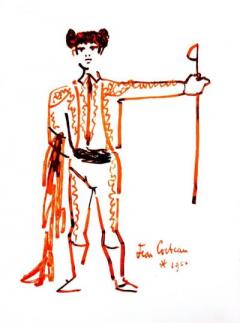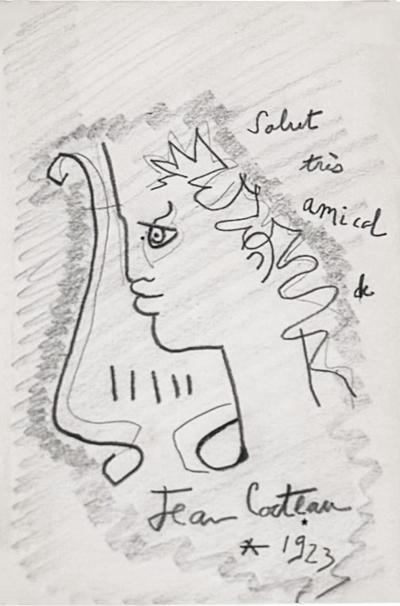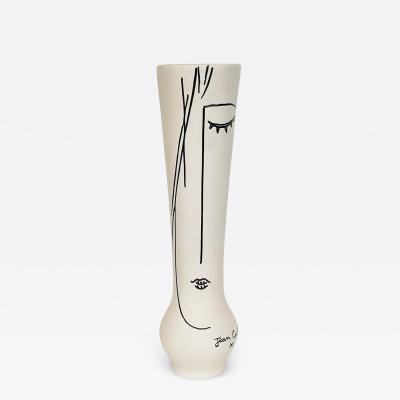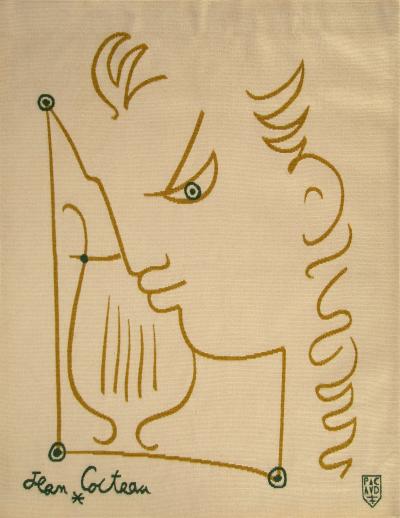Jean Cocteau
French, 1889 - 1963
A member of the French Academy, Jean Cocteau was certainly a Renaissance Man of the 20th century. Not content to limit his artistic expression to one genre, he worked in the fields of literature, music, theater and film, and the visual arts. He was a poet, a novelist, playwright, and actor; he adapted screenplays, acted, directed for film and stage and was an artist and designer. He was a central figure in the art world in his time, and his versatility led him to befriend and work with notable artists, writers, directors, and actors of his time. His list of friends, lovers and collaborators reads as a veritable Who’s Who of the 20th century art world; to name but a few: Pablo Picasso, Jean Satie, Igor Stravinsky, Kenneth Anger, Marlene Dietrich, Edith Piaf; there were many others. Jean Cocteau came to the world of pottery rather late in life, he was 68 years old when he began to explore the field of ceramics after meeting Marie Madeleine Jolly and Philippe Madeline, with whom he worked in close collaboration to create his series of pottery from 1958 until the year of his death in 1963. During the years at the “Madeleine-Jolly” workshop, he created more than 300 pieces of ceramic and jewelry, which he referred to as “graphic poetry”. Jean Cocteau was not content to work with the ceramic techniques and within the style of decorations that were used; he had a vision in mind, to leave as much of the clay bare and to embellish it as one would apply tattoos to the skin. He adapted three techniques for decorating ceramic. He used enamels on the clay, typically to outline forms, the profile of a subject, for example. He also used small red enamel dots as embellishment, and well as coloring the eyes and sometimes to highlight facial features such as the nostril or the tongue. He very rarely used enamel to cover the background of a dish entirely. A new technique was a “pencil” of sorts – a combination of clay and oxides that were rolled into cylinders and used to draw onto the surface of the clay, rendering the effect of a pastel on paper. Finally, he also used slip to cover the background of some of his pieces, occasionally employing the sgraffito technique where the slip is carved through to reveal the clay beneath. Occasionally he also carved the surface of the clay to render dimensional and textural appeal to the work. Jean Cocteau found the inspiration for his work in many muses from classical mythology, as we find in many of his ceramics, and from his contemporaries. One can clearly see the influence of his close friend Pablo Picasso’s famous line drawing technique in Cocteau’s own work. Interestingly, Cocteau is quoted as having said; “Picasso told me that if I put a ceramic in the kiln, I would be lost. But I have always taken great pleasure in being lost.” “…Pottery has saved my life! It stops me from using ink, which has become too dangerous, since everything we write is systematically deformed by our readers.” Jean Cocteau
Browse all Fine Art on Incollect.com
Browse all Fine Art on Incollect.com
Jean Cocteau
Lithograph by Jean Cocteau (1889-1963)
H 14.17 in W 11.42 in D 0.79 in
$ 870
Access Trade Price
